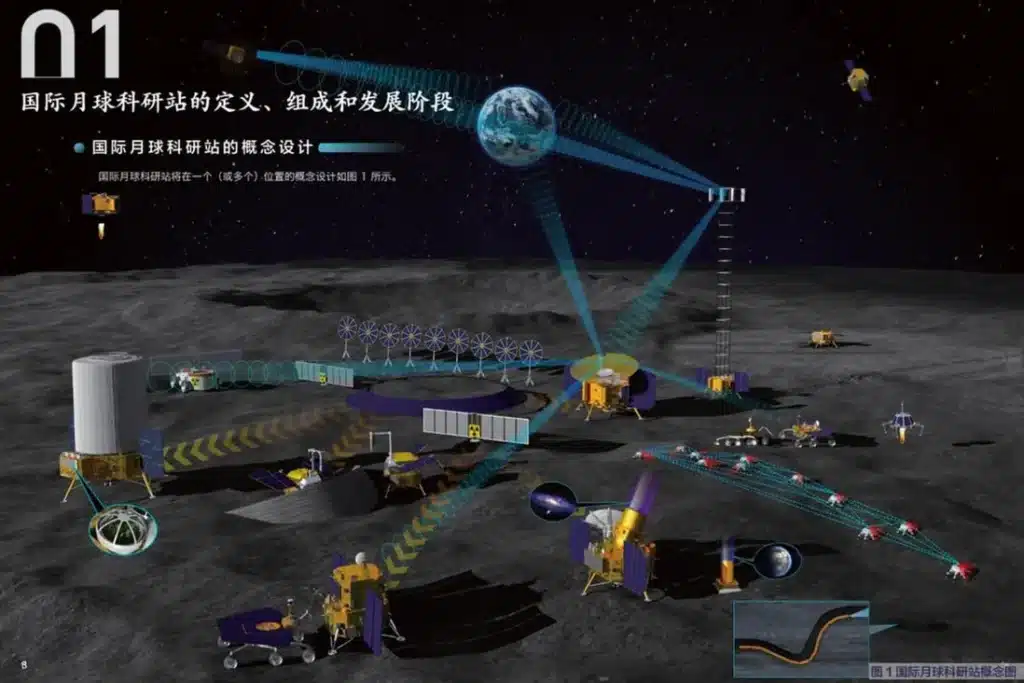As often happens, our media misses pieces of Chinese news. Sometimes they are the result of propaganda and must be considered in a broader political context, of course, but this does not mean that they should be ignored. For example, last week a statement made to state broadcaster CCTV by went unnoticed Wu Weiren, chief designer of the lunar exploration program. A real inauguration speech:
We are now developing a new system that uses nuclear energy to meet the long-term high-power energy demands of our lunar station
How to evaluate the statement?
Is it an attempt to respond to the USA, which a few days ago (finally) launched its most powerful rocket and opened its Artemis Mission, which plans to return to our satellite? The first step towards a lunar base, and towards the reassertion of supremacy in the space race.
Maybe. After all, China has only recently entered the "Moon club" scene. And last January he was still negotiating with Russia for the construction of one International Lunar Research Station. The program (whose talks date back to the previous year and are evidently affected by the conflict in Ukraine) provides for the establishment of a lunar settlement, but not before 2040.
In recent months, however, the Celestial Empire seems to have decided to step on the accelerator. This is why he is now talking about a lunar settlement by 2028, well ahead of schedule.

Merit of nuclear power?
The continuous, reliable and cost-effective use of nuclear energy for space exploration purposes is not just attractive to China. NASA has also been doing it for some time seriously think about this option. If US (or Chinese) scientists optimize the processes involving this technology, they will also be able to generate oxygen and water directly from a settlement on the lunar surface.
China does not unbutton on this matter, but he declared one thing several times: is developing a nuclear reactor for missions to the Moon and beyond, and has been doing so since 2019 under a government program. Last year, the research team has announced at South China Morning Post to have already completed the engineering design of the prototype. He would be able to produce one megawatt of electricity. It would be 100 times more powerful than the corresponding NASA project announced in 2021 and planned for 2030. And that's not the only "competitive" thing in the whole story.
Chinese lunar settlement: what it would look like
The basic configuration of China's lunar settlement will include a rover (also powered by nuclear energy), a sort of hopper, an orbiter and a lander. The rover is expected to be larger than the two rovers already developed by China. Nuclear energy, Wu says, could also be used to power the hopper, the machine meant to move materials in and out of a lunar crater, in search of water.
Nuclear power will support the station's communications facilities to maintain communication with Earth and power the station's communications systems. The settlement will also remain connected to Earth and transmit signals between Earth, Mars and deep space.
“China was the first country to propose building a research facility at the lunar South Pole,” Wu says.
At about 89 degrees south latitude, there could be 180 consecutive days of daylight to sustain sustained operations, for both instruments and astronauts.

The roadmap to settlement
Wu said the Chang'e 6, 7 and 8 missions will lay the foundation of the settlement, and shortly thereafter a team of astronauts will complete its construction. Next, the station will be transformed into a global scientific research facility where astronauts from China, Russia and other potential partner nations occasionally work.
So, as mentioned: is it propaganda or not? China is racing full speed ahead on this path. Soon the Chinese "ISS" will also be operational, and this will make the Asian country the first to have its own independent space presence.
There are challenges to face, though: the upcoming missions Chang'e 6, 7 and 8 require a lot more effort. And here comes some admission: “We need to quadruple the thrust power of our rockets to support manned landings on the Moon, and mass transportation between the ground and near-Earth space,” says Wu.
Here: if I were him, with Artemis just taken off and the new American moon landing expected in 2025, I'd talk about ballistics before a possible settlement.


